"(Sigh...) Why didn't you tell me about this issue sooner?!?"
If you've ever received a surprise in your performance review, you've said (or thought) exactly that.
Few things are as frustrating as feeling you didn't receive constructive feedback when you needed it, and instead are punished by it at review time.
Knowing this, as a manager, you can and should do better. Yet, often we hear managers avoid these conversations because they don't know how to give constructive feedback.
This fear makes it easier to avoid the conversation until you're forced to: at review time.
Today, we're going to teach you the Lighthouse Method: an easy-to-follow, 3 step process to giving constructive feedback, so no one on your team ever feels blindsided at review time, and can start improving right away.
Table of Contents
What is Constructive Feedback?
Constructive feedback is an essential tool for leaders to master. It will help you improve the performance of your team and correct important issues in a way that your team will respond positively to.
Ultimately, the most important aspect of constructive feedback is that it is framed from a caring perspective that you want the person to improve and can help them understand both how to do so and why it is important.
In contrast, negative feedback focuses solely on pointing out flaws and any mistakes the person made. It may also fail to differentiate between issues with a person’s work, and them personally.
Meanwhile, constructive feedback offers support, encouragement, and practical suggestions for improvement.
By focusing on specific behaviors, actions, or outcomes, constructive feedback helps your team members develop their skills, and make key improvements that help them reach a shared goal. This positive, collaborative framing is the most important part of constructive feedback.
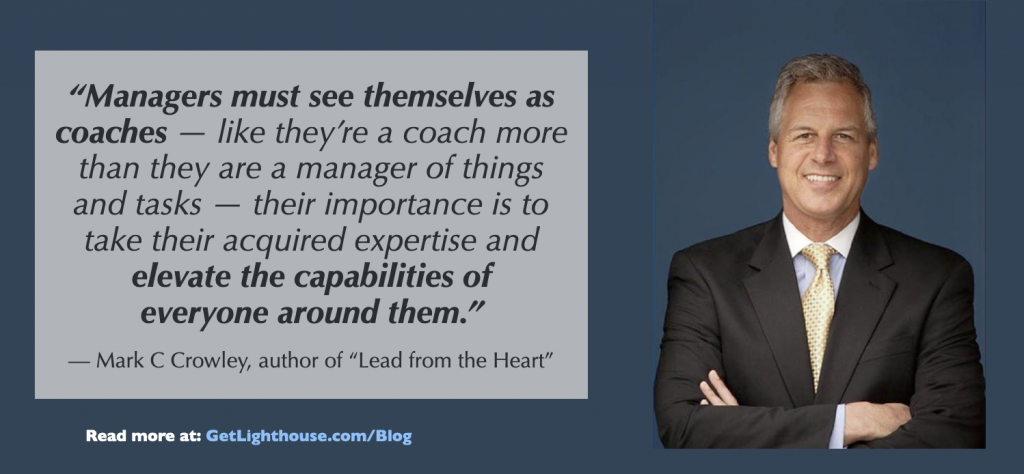
The importance of knowing how to give Constructive feedback
If you want to be an effective leader or manager, you have to know how to give constructive feedback. It is impossible to have a team that already knows how to do everything perfect every time.
Whether due to lack of knowledge, or any number of other factors impacting someone’s work, you will need to provide coaching via constructive feedback to help correct and improve the work of your team often.
Best of all, when you get in the habit of regularly giving constructive feedback, you’ll experience all of these benefits:
- Open dialogue and trust. Your team will become comfortable with you helping them improve.
- Improved team performance. This is always the goal of feedback and the right constructive feedback will have the best reception and likelihood of leading to improvement.
- Better collaboration and teamwork. When your team is regularly improving from your feedback, everything runs more smoothly.
- A culture of continuous learning and growth. Your team will get used to your frequent feedback as a way to become better, making it a habit.
- A positive work environment. When your team sees that feedback is here to help them, they’ll view it as a positive part of working with you.
- Stronger relationships. Trust comes not just from familiarity but from a willingness to help each other be our best.
By embracing giving frequent, effective, constructive feedback to your team, you can unlock their full potential, build a thriving, positive work environment, and reach your highest potential as individuals and as a team.
Giving Constructive Feedback in the Workplace
Using the Lighthouse Method we're about to teach you, you can address issues with your employees like the following:
- Struggles with time management
- Lack of clarity in communication
- Issues with teamwork and collaboration
- Struggles with adapting to change
- Lack of organizational skills
- Negative attitudes, jerks, and other toxic behavior
The key is the deliberate nature of this process. By taking the time to follow the process we show you, you can ensure your team understands what you need them to change and why.
Let's learn more about the approach now:

How to Provide Constructive Feedback in 3 Simple Steps using the Lighthouse Method
The best part about developing your skills at giving constructive feedback is that you'll make your team better. The right piece of helpful coaching, or encouraging, specific praise can make all the difference for someone.
Your team will work better together, you'll have fewer fires to deal with, and reviews will be much easier to write if you build this habit. All because you give effective feedback throughout the year, instead of just at review time.
A few small changes can set you up to give great, constructive feedback. In turn, your feedback can then bring ongoing improvement and better performance across your team.
To accomplish this, just remember 3 key words that make up the Lighthouse Method:
Prefer to listen to learn how to give constructive feedback with this approach? Then, listen to our episode of the 'Creating High Performing Teams' podcast or use the embedded player below:
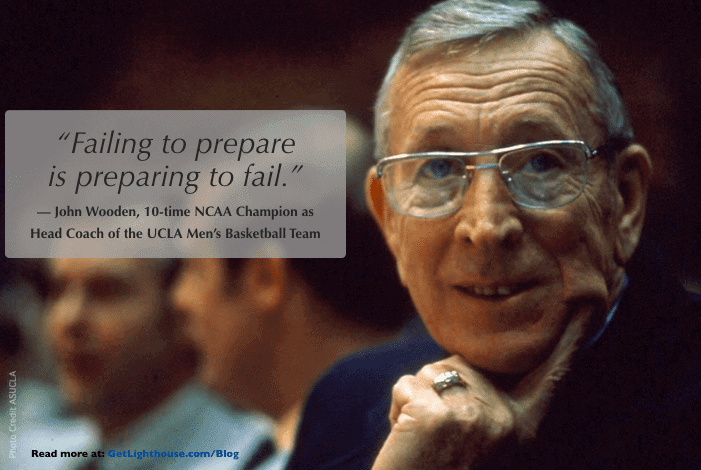
1. Prepare
Doing anything well requires effort. Giving constructive feedback that really works requires preparation on your part.
You can't just give someone a drive-by bit of feedback in chat, a rarely used real-time feedback app, or even a quick comment before running to another meeting.
They will have questions for you.
When you give someone feedback to improve, the first thing that's going to happen is the person is going to ask you questions. Whether they're being defensive, or want to truly understand the situation, a few brief sentences or words are not going to be enough.
Fortunately, the same questions they would ask you are exactly the ones you should ask yourself to prepare:
- When did this happen? What is the context?
- Is this an isolated event, or has it happened repeatedly?
- Why is this important? How does this affect others?
- What do they need to do differently going forward to address this?
Take 5 to 10 minutes and sit down to really think about the feedback you're going to provide. By asking yourself these questions, you'll clarify what your intentions are with the feedback.
As you especially look for examples, you will likely find patterns that help crystallize the central piece of constructive feedback you want them to take away.
When you're intentional with your constructive feedback, and take the time to prepare, you'll be ready for the questions they will ask you, and ensure they take away the right things from your feedback.
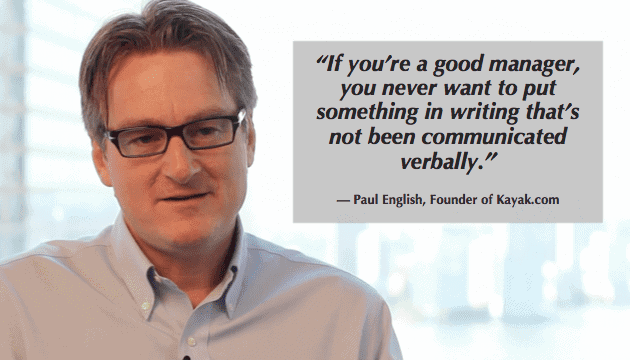
Set aside time to really talk about your feedback.
Constructive feedback is a conversation. As Paul English describes, you need to make important things like this a discussion.
By making the preparations above to collect examples, identify patterns, and get specific about desired changes, you are ready to have a great discussion with your team member.
Best of all, you probably already have the time for this discussion on your calendar. If you have regular 1 on 1s with your team, then all you need to do is put this on your 1:1 meeting agenda for next time. This gives you plenty of time to discuss it, and avoids scaring them by having a separate, special meeting about it.
And if you don't currently have 1 on 1s. Start them now. They're a huge opportunity to improve morale, fix common organizational issues, provide constructive feedback, and build stronger relationships with your team. Learn how to start 1 on 1s here.
Further reading:
- See our comprehensive guide to making your 1 on 1s awesome and get our 1 on 1 meeting template here.

2. Listen
Constructive feedback is a conversation, not a drive by. Not only does that mean you need to take the time to prepare and bring notes to discuss, it also means you need to make it a conversation.
You're not giving them a dissertation or a monologue on why they failed. You're discussing with them some recent areas for improvement. You need to hear their side, too.
Hear them out, and listen for key information.
As a manager, you see only a small part of your team's work. Andy Grove calls this the black box of management. You don't always know all the context of what happens.
This is why Indra Nooyi, CEO of Pepsi, encourages assuming positive intent. Coming in with that mindset helps you have a more open mind, and not assume that something was malicious.
Most importantly, it helps you avoid sticking your foot in your mouth, or focusing on the wrong problem. Before you go too far into your constructive feedback for them, take the time to listen to their side of the story.
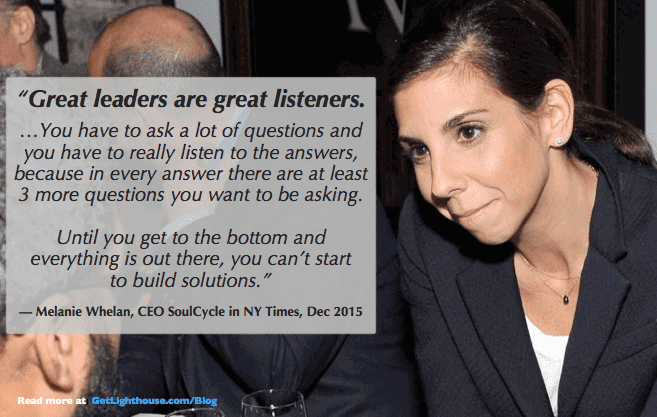
Ask them good questions.
When you're ready to dive into your constructive feedback with them, ask some questions to hear their side of the story:
- How is (the project you're going to give feedback on) going?
- How do you feel your workload is right now?
- What's been your main focus lately?
Notice all these questions start with "What" or "How". This is intentional, as "what" and "how" questions accomplish 2 key things:
- They get people talking. You have to answer with much more detail than yes or no.
- Non-accusatory. When you ask "Why" someone did something it can feel like an attack, generating resistance, fight or flight mentality, and more.
I learned the power of "what" and "how" from the amazing negotiating book, Never Split the Difference, by FBI hostage negotiator, Chris Voss. It's amazing how much asking my team, customers, and others "What" and "How" questions help every conversation.
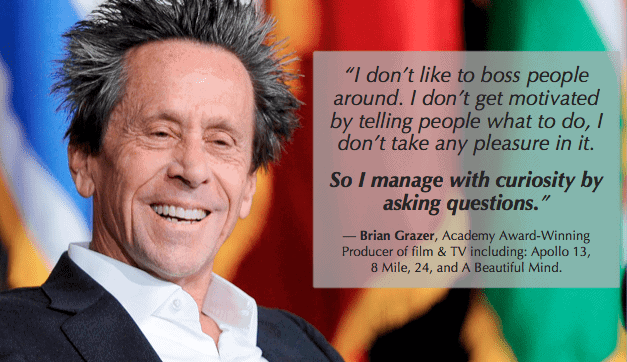
A Story: Avoiding sticking my foot in my mouth
In a past job, I learned this lesson of asking questions before giving feedback in a powerful way.
I had a team member who made a terrible hire. The number of problems the new hire caused in the short time before we let them go was stunning. I couldn't believe they made it through our hiring process, until I discovered that wasn't followed.
I was upset to learn this and prepared to go over in minute detail why we had the specific hiring process we did.
However, once I asked them how they were doing, and what their focus had been on, it all became clear. The problem I wanted to solve was merely a symptom of a much bigger issue we had to fix: they felt overwhelmed and stretched too thin.
Instead of talking a ton about our hiring process, the rest of our discussion focused on adjusting their workload. Amazingly, by the end of the conversation, they were apologizing about the hire and not following our process before I could bring it up.
Best of all, by fixing the root problem I learned about in our conversation, we prevented many future problems. I also earned their respect, as I showed empathy for their situation, instead of just unloading my frustrations on them for the mess I had to help clean up from the bad hire.
Further reading:
- 5 Ways to Become a Better Listener, a key skill for applying the Prepare - Listen - Act model
- Developmental goals for managers every manager should strive for

3. Act
Talking about an issue is good. Hearing their side and getting their buy-in is great. However, what really stands out is when you take action.
After you have the conversation about their side of the story and your constructive feedback, you need to very clearly establish next steps. "Glad we had this chat" is not enough.
Ambiguity is the enemy of good managers.
Your team should manage your expectations and you should manage theirs. When you want to have them change or improve something they're doing, you need to be explicit.
Tell them exactly what should change:
- Are they going to spell check all their work before sending it out?
- Are they going to send you a draft to review earlier in the process? When exactly?
- Will they be apologizing to a colleague in writing for an incident?
- Will another team member be paired with them when they work on improving an area of weakness? Who? When?
- Is there a specific document with instructions they should be referencing the next time they do a task?
Whatever it is, the more specific you can make the next steps, the more likely it is to happen. If there are things you can do to support the change to show you're helping them, that's even better.
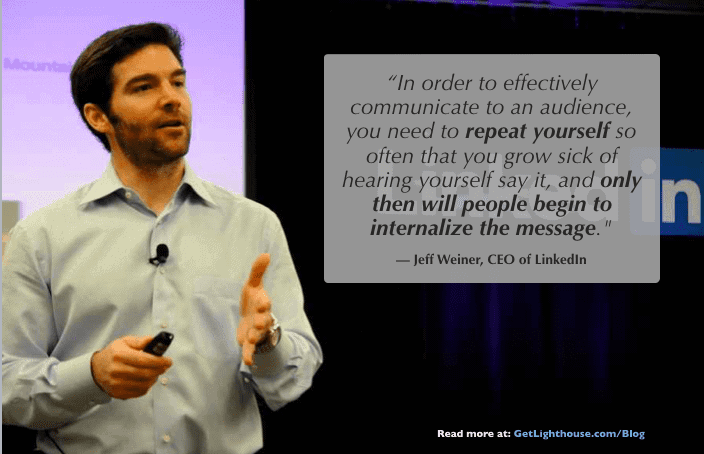
How to Improve Constructive Feedback You Give
Just because you said something does not mean it's going to happen. Saying it once is never enough.
The secret that great leaders like Jeff Weiner, CEO of Linkedin, know is that repeating yourself is essential.
In fact, a study of managers in the workplace by Professors Tsedal Neely of Harvard and Paul Leonardi of Northwestern found this simple truth:
"Managers who were deliberately redundant moved their projects forward faster and more smoothly.”
Knowing this, once you've had this constructive feedback conversation, be prepared to repeat yourself in a variety of ways:
- Followup over email: This way it's documented and clearly reinforces what you discussed (instead of "he said, she said" later).
- Check in next 1 on 1: Checking in how they did since your last discussion ensures progress happens or ongoing issues get more attention.
- Keep it top of mind: Use the Hawthorne Effect to your advantage. Make it clear you're checking their work in this area going forward and they're more likely to improve.
Ongoing focus and repetition regarding their area for improvement is the best way to ensure your efforts to give great constructive feedback stick.
Further reading:
- Read more about the importance of acting on your feedback and following through on your words and how to use that with your team
- Dive deeper into the importance and power of repetition in our deep dive here.
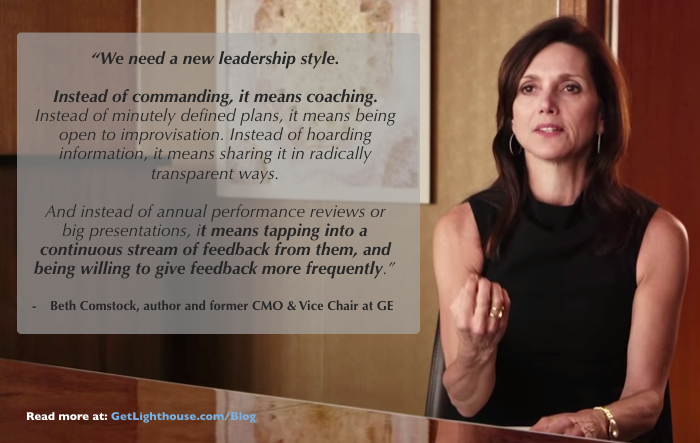
Using constructive feedback to improve your team's performance
In most cases, if you follow this process, you'll get to the root cause of problems and see your team member improve.
However, sometimes a person just isn't the right fit for a job.
The beauty of the Lighthouse Method's Prepare - Listen - Act process is that you're building up detailed notes about your team member's performance. Later, whether you need to write a poor performance review, or go to HR about a termination, you will have all the detail you need.
Especially when you go to HR about letting someone go, notes and evidence of discussions happening over many weeks and months trying to improve them are the first thing they will ask you for. Fortunately, with this process you'll have that, and can be confident you gave the person a fair shot to improve.
Looking for more ideas and help on giving truly constructive feedback? These links can help:
- Learn 5 ways to give feedback better than the infamous sh*t sandwich.
- Find out what is real-time feedback and why their tool can be a terrible idea.
- Learn how to ask your manager for feedback.

What is the difference between constructive feedback and criticism?
Constructive feedback and criticism may seem similar, but there are key distinctions between the two. Constructive feedback focuses on providing specific, actionable suggestions for improvement while maintaining a positive and supportive tone. It aims to help the recipient grow, learn, and develop their skills. On the other hand, criticism tends to be more negative and fault-finding, often lacking constructive solutions or guidance. Constructive feedback is centered around identifying strengths, offering guidance for improvement, and fostering a collaborative and growth-oriented environment. By focusing on constructive feedback, individuals and teams can build stronger relationships, enhance performance, and achieve better outcomes.
How can constructive feedback contribute to personal growth?
Constructive feedback plays a vital role in personal growth and development. It provides individuals with valuable insights into their strengths and areas for improvement, enabling them to enhance their skills and performance. Here are some ways in which constructive feedback contributes to personal growth:
- Self-awareness
- Skill improvement
- Professional development
- Relationship building
Should constructive feedback always include positive elements?
While constructive feedback often includes positive elements, it is not always necessary or required in every instance. The primary purpose of constructive feedback is to provide specific and actionable suggestions for improvement. However, incorporating positive elements can enhance the effectiveness and receptiveness of the feedback.




